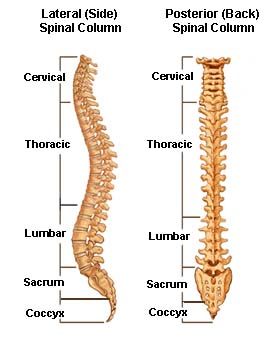I love getting text messages; it makes me feel all warm inside that someone has spent their time – and 10p! – to send me a little message. Recently I have been getting a lot of text messages at random times, and more importantly, from random numbers. They’re always very polite – “ Hello, Our records indicate you may be entitled to £3750 for the accident you had. To claim free, reply CLAIM to this message”. – and don’t get me wrong, I would love £3750 pounds, but I haven’t had an accident (curse my luck!). These wholly anti-climactic messages have, however, inspired me to write this blog, about the most common of accidental injuries (75% of theUK’s motor insurance claims, if you believe Wikipedia); Whiplash.
“Whiplash” is a actually a nonmedical term that has found its way into everyday use (to be completely PC we now should be using Whiplash Associated Disorders – W.A.D) to describe neck pain following an injury to the soft tissues of your neck (i.e. the ligaments, tendons, muscles).
Again, a brief, simplistic (I hope) bit of anatomy. The spine is made up of 33 Vertebrae (boney discs), between which sit on intervertebral disc (soft discs). The neck is made up of 7 of these vertebrae (PUB TRIVIA TIME: the same number as a giraffe), commonly named C1 to C7, and they make up the Cervical Spine (see diagram). C1 and C2 are responsible for most rotation of the head, whilst the others allow moving the head backwards and forwards.
So what happens? Well, W.A.D are caused by an exaggerated movement (or more often, force) applied to your neck that causes movement beyond the neck’s normal range of motion. So, if we take a rear end car collision as an example;
Stage 1 – as a car collides with your bumper, the lowest part of your cervical spine will be forced forward, leaving your body no time to adjust and thus throwing your head back into the head rest and extending the soft tissues of the neck beyond their normal range, causing damage.
Stage 2 – your head will then been thrown forward (chin to chest), and so flex the neck beyond its comfortable range in the opposite direction, again causing damage.
Of course, W.A.D do not only occur in the car; falling and banging your head are also causes, and so they are quite often seen in sporting environments (rugby, diving, horse riding).
Symptoms can vary (in type and length of time to appear), but generally will be one or more of the following; Neck pain, Neck swelling, Tenderness along the back of your neck, Muscle spasms (in the side or back of your neck), Difficulty moving your neck around, Headaches, Shooting pain from your neck into either shoulder or arm. Things to also be aware of are a change in physical strength in your arms and legs, your sensitivity to the touching of the skin in different parts of the body, and any change in reflexes reactions at the joints of the arms and legs.
There are things you should do yourself if you feel like you may have suffered a W.A.D – apply ice to the neck for 10-15 minutes at a time each hour for the first 24 hours (while awake!). Continue to use ice therapy intermittently for at least 72 hours, after which some people feel benefit when alternating with a heat pack. Anti-inflammatories can be taken orally or through a gel, but I personally don’t recommend these for at least 48 hours post incident, if at all, and certainly not as a long-term treatment.
Primarliy, as with all injuries, it is advised that you seek help from a trained therapist as soon as possible. It is often important to aid the recovery and help reduce pain/symptoms/recovery time, which can be achieved through some delicate deep tissue massage and safe manipulation of the damaged tissue from a highly qualified and competant therapist, who will also prescribe some safe range of motion exercises to restore flexibility. In my experience, this cant start soon enough, and although there is no reliable way to predict the prognosis of W.A.D, should you seek help,and the above steps be followed a full recovery could take as little as 6 weeks.
For more information please visit www.dc-injuryclinic.co.uk
